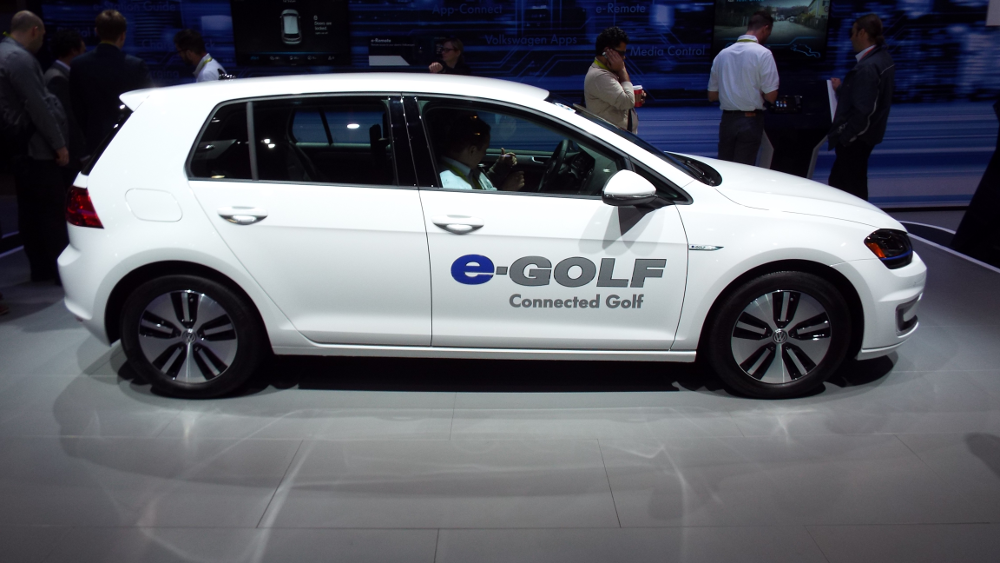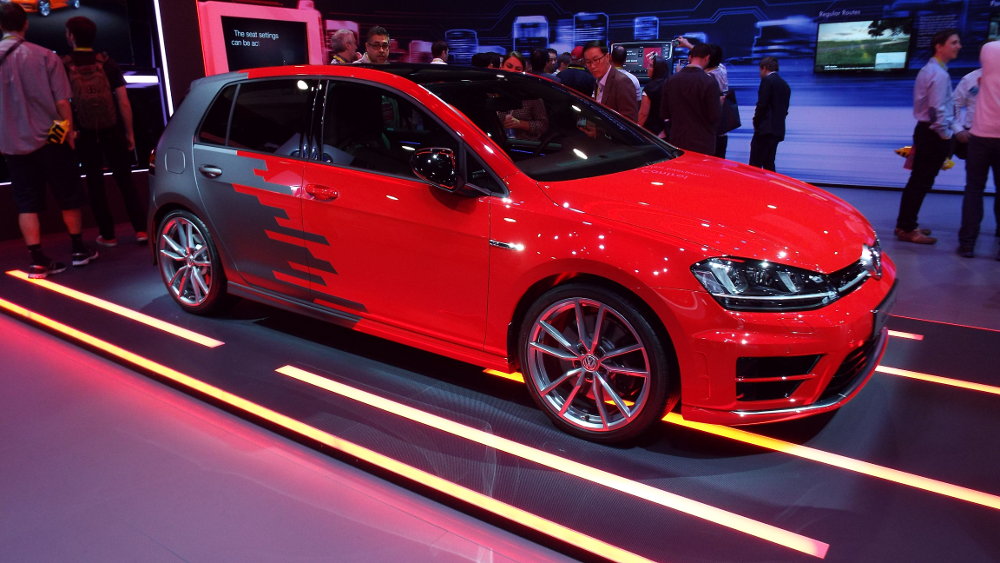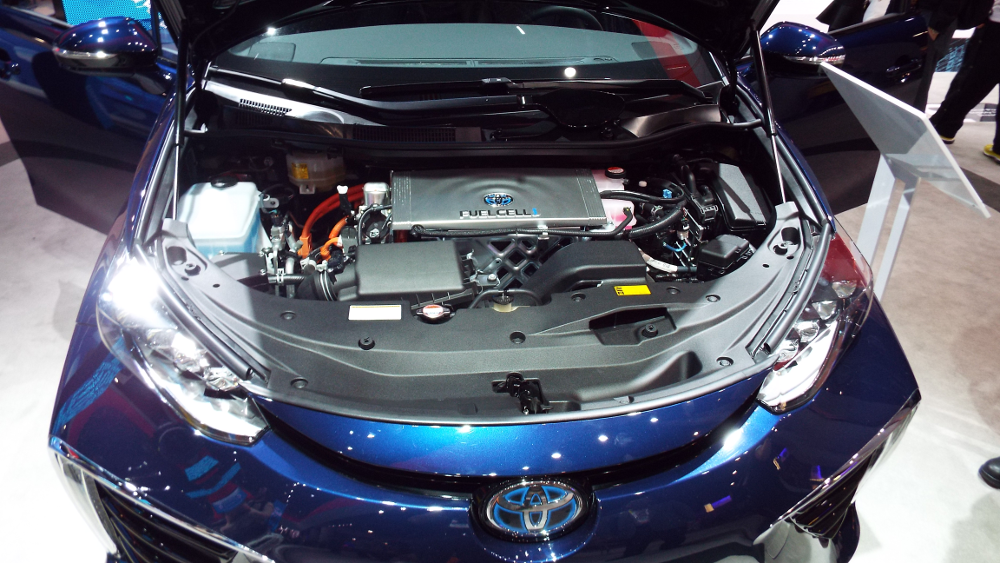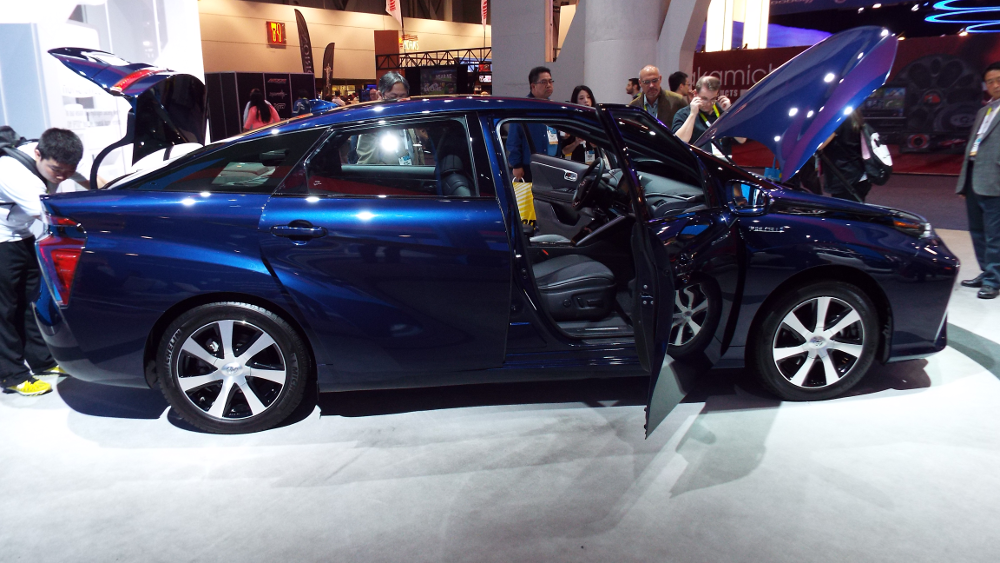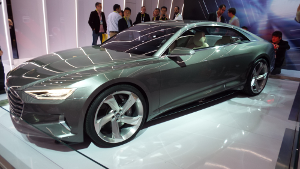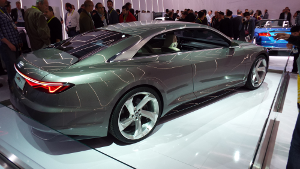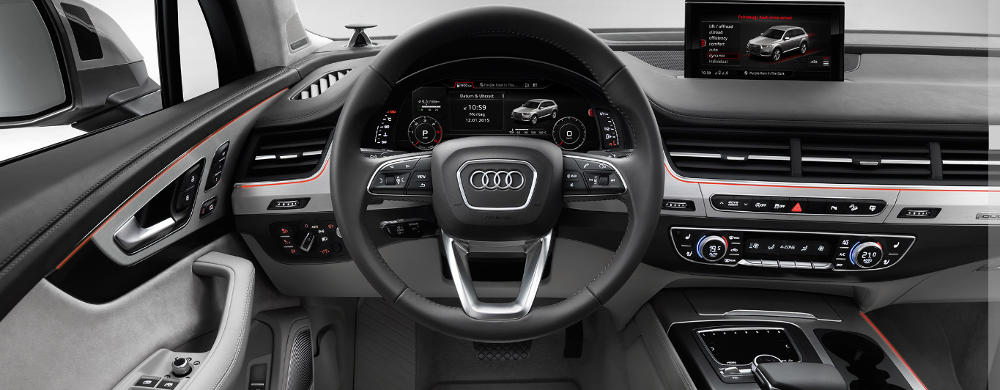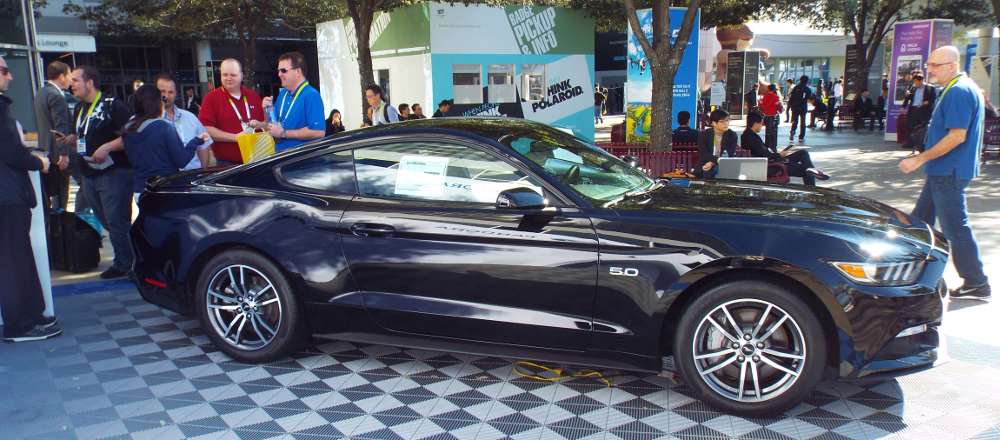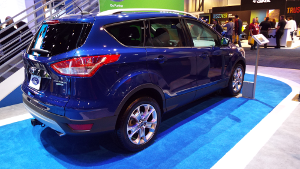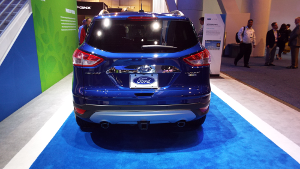We are continuing our explorations of CES 2015 today by hitting the North Hall where most of the key automobile manufacturers have set up their displays. The common technology themes we are seeing relate to connectivity, intuitive controls, fuel cell vehicles and automated driving assistance. Follow along as we take you through what we saw and investigated manufacturer by manufacturer, in the same order of our display visits.
VOLKSWAGEN
The first manufacturer we came across was Volkswagen. The key areas that they are devoting their development resources to are gesture control, automated parking and inductive charging of electric vehicles. Our first image below is of the e-Golf or Connected Golf. This concept vehicle features an advanced interface management that allows for a wide range of apps, smartphones, tablets and smartwatches to communicate and interact with a next-generation infotainment system.
Also at Volkswagen’s display was the Golf R-Touch as seen below. This concept vehicle interprets hand gestures and converts them to commands. For example, if you wish to open the sunroof, you make a sweeping gesture with your hand toward the windshield. To close the sunroof, make a sweeping gesture with your hand away from the windshield.
TOYOTA
The next auto manufacturer booth in line was Toyota. Toyota’s 2015 plans are all about their new hydrogen fuel cell vehicle called the Mirai. Mirai means “future” in Japanese, and not only is the Mirai an automobile, it can also serve as an alternative power source in an emergency.
The Mirai is a midsize four-door sedan whose front wheels are driven by an electric motor. The electricity to power the front wheels is produced as needed by combining hydrogen with oxygen, and produces no emissions other than water vapor. The Mirai can be refueled in about five minutes, and can go around 300 miles on a single fill-up.
Toyota’s Mirai can supply enough energy to power home essentials and your consumer electronics in an average household for up to a week in an emergency. Even if you are snowed in and it is 30 degrees below zero, the Mirai will start up. The Mirai is expected to go on sale in October of 2015.
AUDI
The next auto manufacturer display we visited was that of Audi. Their CES 2015 theme is the “next chapter”. Audi is keying in on their vehicles’ communication with its surroundings. Highlights include piloted driving, new Audi Connect solutions, new infotainment modules, control and display concepts and new developments in lighting technology.
Audi’s featured vehicle was the hybrid-powered Audi Prologue concept car. Like several other manufacturers, Audi sees hydrogen fuel cell hybrids as the next-generation solution for hybrids. Above we see two images of the Prologue concept luxury hybrid.
Take a look at the attractive and intuitive controls and displays shown above of the new Audi Q7. Audi has achieved brilliant 3D graphics of all information, displayed on a 12.3″ TFT monitor. The Audi “virtual cockpit” is powered by a NVIDIA quad core T30 graphics processor. The Q7 is slated to debut at the Detroit auto show.
FORD
A short stroll away was Ford’s CES 2015 display. Ford’s theme this year is “smart mobility.” Ford smart mobility will use innovation to take their vehicles to the next level in connectivity, mobility, autonomous vehicles, and the driver experience. And of course no Ford display would be complete without the new generation Ford Mustang shown below.
In 2015, Ford will launch no less than 25 global mobility experiments to test new ideas, and to address growing or increasing transportation challenges. The insights gained will determine where Ford will choose to invest their resources.
Ford was showcasing its newest generation SYNC 3 connectivity system. Ford has been a pioneer of the connectivity trend, and SYNC 3 is their most advanced system to date, highlighting their autonomous vehicles already on the road, as well as those still under development. Above we have two images of the Ford Escort Titanium version, featuring SYNC 3 connectivity.
 Technology X Tomorrow's Technology Today!
Technology X Tomorrow's Technology Today!

